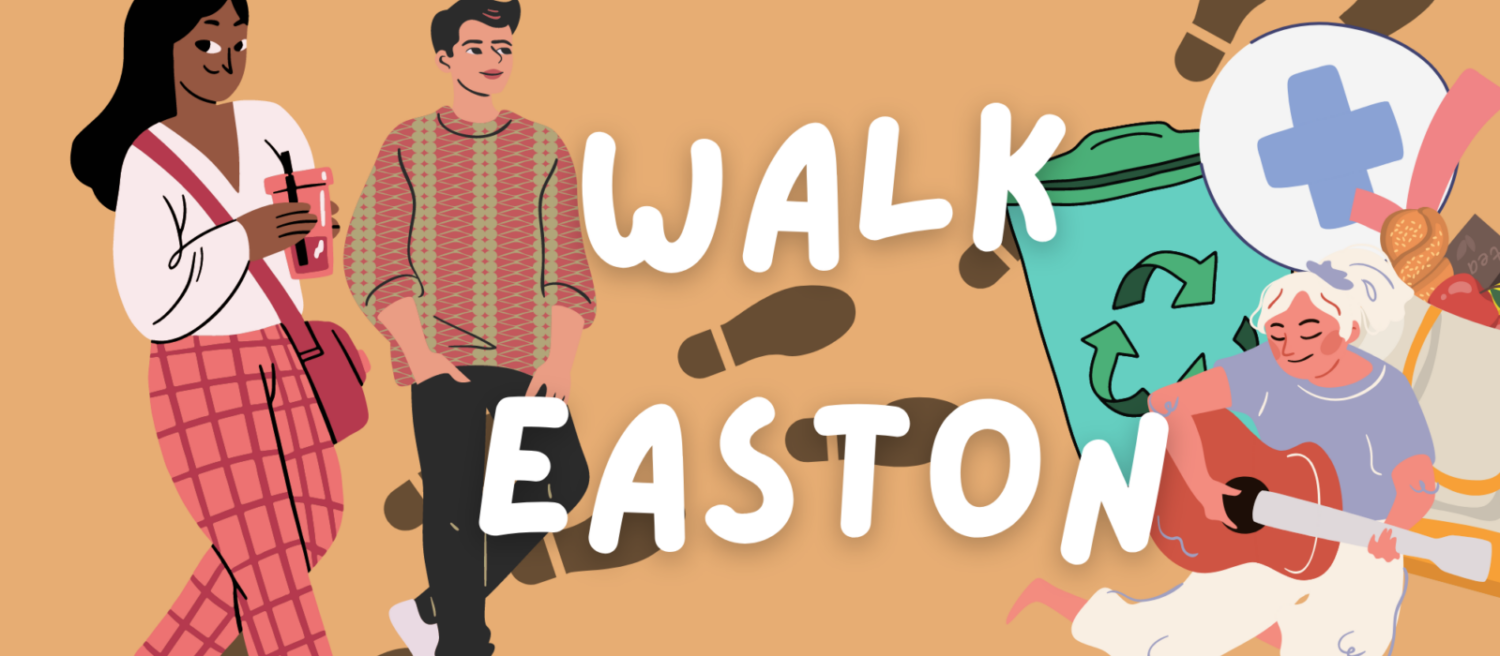What is a “15-Minute City”?
Coined by scientist Carlos Moreno in 2016, the 15-minute city stems from his views that urban areas needed to be people-centered, focusing on the needs of the civilian rather than the needs of the city. The basis of the concept is simple: a city in which all necessary amenities are within a 15-minute walking or biking distance of any given point. The concept also focuses on building an environment focused on people. Community is a central pillar in creating a city that is highly integrated in both space and time.
Is Easton a Walkable City?
Easton is a fairly walkable city using walkable city standards with key weak points that require a risk assessment to improve access for residents. Certain physical barriers limit the way in which Easton residents can interact with their community sans motor vehicles, most notably the topography. There are also barriers in terms of the presence, or lack thereof, of amenities. On a citywide level, there is limited grocery store access and disproportionate asset distribution. For example, College Hill is walkable recreationally but lacks the most necessary amenities within walking distance. To best represent Easton’s current assets, we created an asset map outlining all major categories of a functioning 15-minute city. This visual representation details where residents are able to access these essential services and where hubs are located.
What do Community Leaders Have to Say?
After interviewing Easton residents, volunteers, and community leaders, we were able to decipher recurring themes and concerns for Easton’s walkability and accessibility. These themes included:
- Lack of Pedestrian Friendly Corridors or Sidewalks
- Lack of Public Transit Connecting College Hill to Other Areas
- Lack of Grocery Stores
- Lack of Recreation & Sports Fields for Youth and Adults
- Lack of Common Spaces
- Gentrification
What Can Be Done?
There are multiple avenues of improvement that can be taken to address each of these themes and concerns. Firstly, utilizing research from Easton community leaders and our asset map, we suggest a serious focus on food accessibility. Something needs to be done to address the food desert that Easton has become. Having access to reasonably priced healthy food is a big factor in quality of life. We also were given small-scale recommendations that would go a long way in improving walkability. Urban elements such as curbed cutouts, highly visible crosswalks, and proper signage to alert drivers where people are walking can go a long way in addressing barriers to walkability in the Easton community. In line with 15-Minute City recommendations of public use buildings, Easton has community centers and public spaces that could be tailored to multiple interests that could help foster a greater sense of community. Simple aesthetic changes can also be made to promote walking in Easton. One example of this is increasing the frequency of city-owned trashcans in the West Ward to make the neighborhood a more pleasant place to walk.
This webpage provides a brief overview of our research and recommendations to make Easton a more walkable and accessible city. Our full-length report can be found here.
